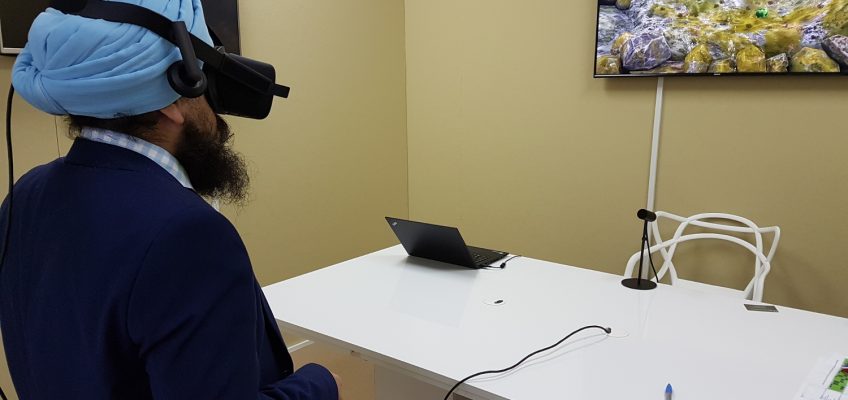Ocean acidification is not something most people are immediately passionate about. Unless they understand it, that is. When you realize that this process will effectively wipe out some of some of our world’s most beautiful landscapes, and a decimate countless species of marine flora and fauna that depend upon it, then it starts to become a bit more real. And that’s where VR comes in, because VR is very good at bringing abstract concepts to life and making them feel real for the user.
Ocean acidification could wipe out entire marine ecosystems Click To TweetThe Ocean Acidification VR Experience does this by taking you on a journey where you can see where those carbon dioxide molecules go, and what they do, once they leave your car’s exhaust pipe. It shows you exactly how the CO2 we pump into the atmosphere every day has a direct impact on the health of coral reefs, and the broader ocean ecosystem. This is a project I’ve been following for quite a while now, having first met the team working on it at Stanford University’s Virtual Human Interaction Lab early last year.
The Crystal Reef VR experience was popular when it premiered at Tribeca last year Click To TweetAfter the enthusiastic response they got from showcasing their Crystal Reef 360 video experience in film festivals such as Tribeca and I talked to the project lead Cody Karutz about how the immersive nature of VR as a medium increased people’s empathetic connection to the problem. Their research has consistently found evidence that creating such an emotional connection is a factor in getting people to positively change their behavior and therefore reduce their emissions. Since then, the team have continued their research into how this increased engagement and empathy could be leveraged as an education tool.
“360 video is good for showing the user something in a more immersive way, but it has some passive limitations. By making the experience interactive like we’ve done here it gives the user a framework for not only observing, but also relating their actions to their own situation. We still have a way to go on perfecting how that works, but it’s pretty powerful,” explains Karutz.
When they premiered that previous 360 version at Tribeca, the team asked users for their consent in collecting data about their experience: “Usually it would take us a really long time to collate that much feedback in the lab, but in the space of one weekend we got hundreds of responses,” Karutz says. And this has proved extremely useful in developing the new iteration, which was demoed for the first time at the Global Education and Skills Forum in Dubai this week. The event, organized by the Varkey Foundation, explores how education can be used to solve the worlds’ problems, and this year particularly focused on how we can equip children to become global citizens. And key part of this concept of global citizenship is caring for the environment.
VR Experience From Stanford Shows How We’re Killing Our Coral Reefs https://t.co/S0Bfwr1jGU via @UploadVR
— Alice Bonasio (@alicebonasio) March 19, 2017









